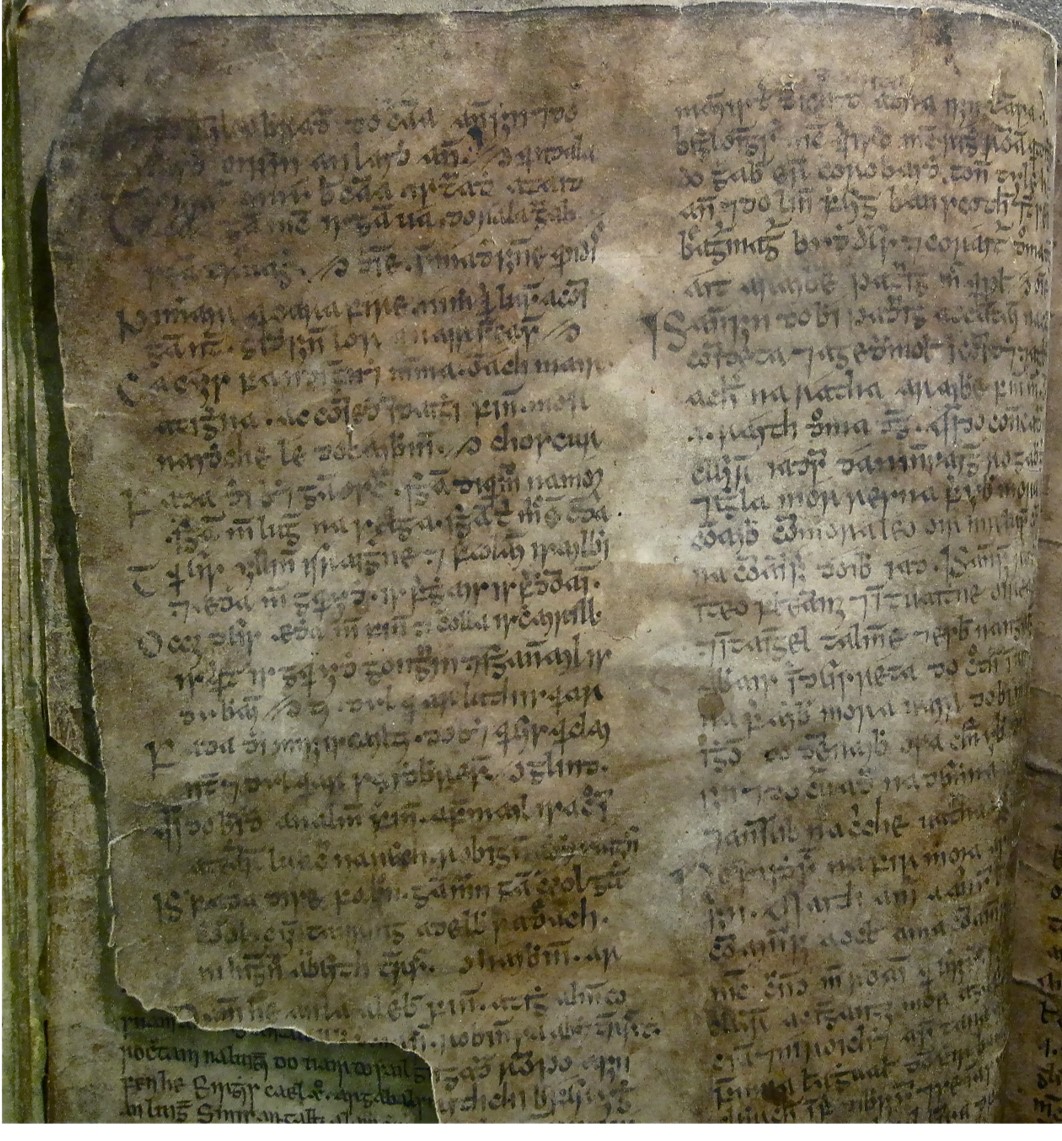On 8 November, 2016, the Centre welcomed Geraldine Parsons (University of Glasgow) to discuss ‘Expanding the conversation: a previously unedited poem from Acallam na Senórach’. Geraldine Parsons began by saying that this lecture focuses on a short section of the Acallam na Senórach, which she described as “a lengthy, complex vernacular literary narrative written circa 1200.” It is an account of the warband, or the Fian, of Finn mac Cumaill in the 5th century as they journey around Ireland. The portion of the tale Geraldine focused on in this lecture joins the band when they are looking for a place to stay in the north of Ireland and seek lodging with Lady Cama. While there are five known manuscripts which contain the Acallam, one in particular has not been edited, translated, or analysed. She seeks to redress this and is in the process of bringing this particular manuscript, Rawlinson B 487, into the academic discourse.
The five manuscripts which relate to the Acallam include:
- Laud Misc. 610 (Oxford, Bodleian Library)(This does not contain the Cama episode).
- Rawlinson B. 487 (Oxford, Bodleian Library)
- The Book of Lismore (Chatsworth)
- OFM-A4 (Dublin University College, Department of Archives)(Franciscan text)
- OFM-A20 (Dublin University College, Department of Archives)(Franciscan text)
Parsons stated that of all of the manuscripts, the scribe for the Rawlinson B. 487 is the most succinct; the other manuscripts are more verbose and contain many more stanzas of poetry. The Rawlinson manuscript lacks 42 poems and parts of 18 poems found in the Book of Lismore and Laud Misc. 610. While the Rawlinson manuscript is missing the introductory prose due to the condition of the preceding folio, what remains of this Cama episode in this manuscript is ten stanzas of poetry; in comparison, the Cama episode in the other three manuscripts contain the introductory prose and one stanza of poetry. The Rawlinson B. 487 scribe shortened other portions of the Acallam, but it is clear that this tale of Lady Cama captured their interest.
In this episode, Lady Cama acts as an interrogator to draw tales out of the Fian’s history, usually a position taken by St. Patrick in the Acallam. She is briefly described as sad in the other manuscripts, and the reasoning for her sadness is due to her lack of heir or close kin; in the Rawlinson poem, her grief is expanded upon, and is attributed to the loss of the people of her generation, namely, Finn and other members of the Fian. If Cama was invented by the writer of the Acallam, she was given a high status above other women; she is named as one of the three elders of the Fian. She is an unusual female character because she represents a self-sufficient, apparently single, woman. One of the titles she was given could be translated to “Female Keeper, Guardian, Custodian,” and might have martial overtones. Others have translated it to “Foster mother.” Geraldine found this term too determinate, and instead suggested that Cama might have acted as a female hospitaller to Finn. This portion of the Acallam might be echoing her previous position as hospitaller, as the Fian seek shelter with Cama.
Geraldine presented a working draft of her translation of the poem to the audience and indicated that there were several difficulties in translating and editing this manuscript. Some letter forms presented challenges. While she is unable to determine the poem’s date simply by language at the moment, it does not seem likely that the Rawlinson scribe innovated this section; there is no other section in the manuscript that deviates significantly from the Lismore and Laud Misc. sources. Geraldine said that there were a couple of reasons that the Rawlinson manuscript had not been translated or edited up until now. Not much was available publicly, the microfilm was not of the best quality, and there was no tradition of using this manuscript in academia. She cautioned that once you have a printed edition of a story, it tends to take the place of the original manuscript and we forget to ask what else could be out there. Parsons concluded by saying that this exploration was a bit of an experiment to question to what extent a relatively bland poem can be opened up. Already it is clear that this text has contributed to our understanding of gender roles in this poem. She hopes that in the long term she will be able to produce an edition based on the Rawlinson manuscript to improve our understanding of the Acallam.
Summary by Megan Kasten (PhD Researcher)
Next week, the Dalrymple Lectures will be given by Professor Roger Stalley (Fellow Emeritus at Trinity College Dublin) on the topic of “Ireland and the art of stone carving in early medieval Europe.” These will take place in the Sir Charles Wilson Building on Monday, Tuesday and Wednesday from 6:30pm and on Thursday from 7:30pm.


